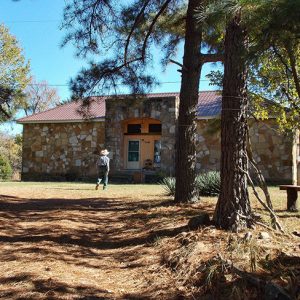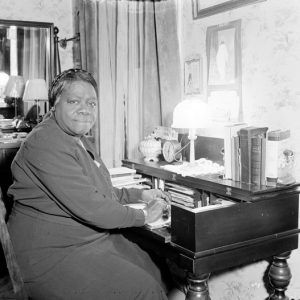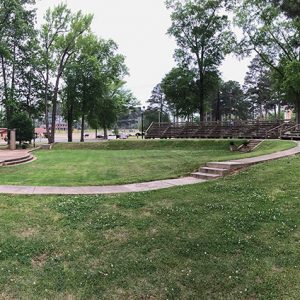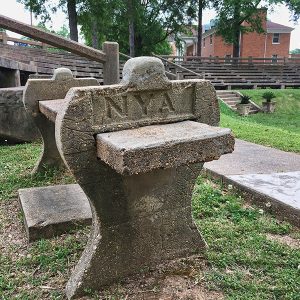calsfoundation@cals.org
National Youth Administration
The National Youth Administration (NYA) was the last of President Franklin Delano Roosevelt’s New Deal programs established to address the massive unemployment caused by the Great Depression. It focused on creating employment and education for people aged sixteen to twenty-five who, because of the effects of the Depression, often had neither.
Roosevelt created the National Youth Administration by executive order on June 26, 1935, as part of the Works Progress Administration (WPA) at a time when some 2.9 million American children were in families receiving government relief. The NYA’s goal was to provide funds for part-time work for out-of-school youths from families on the dole; training, counseling, and placement for NYA workers; recreational programs for workers; and student aid for part-time work for high school or college students.
Joseph W. Hull, president of Arkansas Polytechnic College (now Arkansas Tech University) in Russellville (Pope County), directed NYA activities in Arkansas. The NYA’s state offices were located in Russellville, and district offices were established there and in Camden (Ouachita County), Little Rock (Pulaski County), and Newport (Jackson County). In addition, Holloway Smith served as “Supervisor of Negro Activities” in Pine Bluff (Jefferson County).
The NYA reported that it had spent $1,677,082 on work projects and $891,276 on student aid in Arkansas from 1935 to 1938. The top projects for boys involved constructing and repairing school buildings, while the top categories for girls were homemaking/home-economics projects and arts/crafts. Pine Bluff was home to Camp Bethune, one of “five special camps for Negro girls” in the United States. The 1938 report stated that in the previous fiscal year 4,333 young men and 2,167 young women—including 525 black men and 125 black women—had received employment through the NYA. Some 3,800 men and 3,000 women—including 400 black men and 125 black women—received student aid during the same period.
In order to meet the needs of rural youths who lacked transportation to and from projects, Arkansas emulated a pilot program from Louisiana and established eight residence centers to serve the children of tenant farmers and sharecroppers. By 1938, 445 rural youths were enrolled in the center, with the boys having the choice of agriculture-related training, along with such activities as woodworking, welding, auto mechanics, or forestry, while the girls were trained in domestic activities.
As with the earlier Civilian Conservation Corps (CCC), the NYA projects often involved the workers living together; unlike the CCC, the NYA emphasized gaining practical work skills in such areas as construction, mechanics, and forestry that would lead to future employment opportunities. NYA projects could also lead to educational opportunities, as in a 1941 project at the University of Arkansas (UA) in Fayetteville (Washington County), where seventy boys built a barracks building that would later serve as a farm machinery laboratory for the school. In return, the workers were allowed to enroll in classes while doing odd jobs on the campus and its farm.
A large proportion of the NYA’s projects in Arkansas focused on improving educational facilities, and by 1943 the state program could boast completing eighty-seven school buildings, forty-four shop buildings, sixty-seven vocational agriculture buildings, fifty home-economics buildings, fifteen teacherages, and thirty-six gymnasiums. The NYA built a total of 447 buildings in Arkansas and was involved in repairing and remodeling 325 other structures.
In July 1939, the NYA was reorganized and placed under the Federal Security Agency, and—as with other New Deal programs—the emphasis moved from providing emergency aid and employment to work that would benefit defense industries as the likelihood of war increased. This trend was reflected in the report for July 1941 to June 1942. In the winter of 1941, 3,820 NYA workers were employed on traditional projects, while 2,378 were in defense-related positions. The following spring saw 5,198 NYA workers in traditional jobs and 1,347 in defense duties. In 1942, the NYA was placed under the War Manpower Commission. The National Youth Administration was ultimately liquidated in July 1943.
Several Arkansas buildings—mostly schools—constructed by the NYA are listed on the National Register of Historic Places. They include:
| Property Name | Date Listed |
| Alco School | Listed September 4, 1992 |
| Arkadelphia Boy Scout Hut | Listed January 28, 2002 |
| Big Flat Gymnasium | Listed November 19, 1993 |
| Calico Rock Home Economics Building | Listed September 10, 1992 |
| Dill School | Listed August 16, 1994 |
| Garrett Whiteside Hall | Listed November 21, 1994 |
| Greek Amphitheatre at Southern Arkansas University | Listed June 1, 2005 |
| Horace Mann School Historic District | Listed January 29, 2007 |
| Izard County Courthouse | Listed September 30, 1993 |
| Moorefield School | Listed September 4, 1992 |
| Mulberry Home Economics Building | Listed September 10, 1992 |
| Quitman Home Economics Building | Listed August 16, 1994 |
| South Side High School Sign | Listed January 18, 2023 |
| Williamson Hall at Arkansas Tech University | Listed September 18, 1992 |
| Women’s Community Club Band Shell | Listed August 16, 1994 |
The Jacob Wolf House (listed April 13, 1973) was rehabilitated in 1938 with NYA labor.
For additional information:
Barham, Ed. “National Youth Administration Camp at Melbourne.” Izard County Historian 46 (July 2021): 2–28.
Felts, Mollie. “WPA and NYA Projects Relating to Schools in Craighead County, Arkansas.” Craighead County Historical Quarterly 21 (October 1983): 7–15.
Hope, Holly. “An Ambition to be Preferred: New Deal Recovery Efforts and Architecture in Arkansas, 1933–1943.” Little Rock, Arkansas Historic Preservation Program, 2006. Online at http://www.arkansaspreservation.com/News-and-Events/publications (accessed September 21, 2021).
National Youth Administration. State of Arkansas Fiscal Report, 1935–1938. In the files of the Arkansas Historic Preservation Program, Little Rock, Arkansas.
“N.Y.A. Project.” Arkansas Alumnus 17 (April 1941): 10.
Mark K. Christ
Little Rock, Arkansas












I own a house between Imboden and Ravenden, Arkansas, that was built by the NYA. It was built in 1936 as a schoolhouse by the Oak Leaf School District #44. The outside walls are in original condition. The roof was replaced and original windows were replaced. It’s quite spectacular in its historical presence. I’ve often wondered if it could or should be placed on a historical register, whether Arkansas or National.